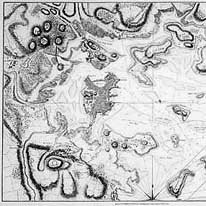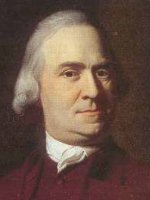Corporal Punishment in Colonial Schools
With corporal punishment in schools on the front page of today's New York Times, it seems timely to share more of Harrison Gray Otis's memories of going to the South Latin School on School Street just before and during the Revolution.
The practice of beating children in American schools goes back a long time, and has even been viewed as humorous, as in this Norman Rockwell illustration for Tom Sawyer. But today adults aren't allowed to beat unrelated children in schools in most of the U.S. of A., just as they aren't allowed to beat those children on the streets, in cinemas, or other places where they might be sorely tempted to.
Among the states that allow corporal punishment in schools, the Times reports, it's most common in Mississippi (over 9% of all students struck at some point in 2002), Arkansas, Alabama, Tennessee, Oklahoma, and Louisiana (fewer than one in forty students). Those six states also rank at #40 or below among American states on national test scores in elementary public education.
Corporal punishment was probably more common in colonial Boston's schools, based on memories of former scholars like Otis. For one thing, beating children was more common across society. Furthermore, with teacher-student ratios of up to 100:1 and lessons quite boring, physical punishment was probably the only way that teachers could keep the boys in order.
Harry Otis and his classmates started at the South Latin School under Master John Lovell (1710-1778) and his "usher," or assistant teacher, who was also his son: James Lovell (1737-1789). The boys called their teacher "Old Gaffer" (behind his back), and looked out for his "ferule"—a wooden stick like a thick ruler without any of those distracting measurements etched on it. Otis wrote:
Gaffer’s ferule was a short, stubbed, greasy-looking article, which, when not in use, served him as a stick of sugar candy. The lightest punishment was one clap, the severest four—the most usual, two, one on each hand. The inflictions of the old gentleman were not much dreaded; his ferule seemed to be a mere continuation of his arm, of which the centre of motion was the shoulder. It descended altogether with a whack, and there was the end of it, after blowing the fingers.Otis also told his granddaughter about an "old Latin School ditty" that linked the punishments to the grammar lessons:
But Master James’s fashion of wielding his weapon was another affair. He had a gymnastic style of flourishing, altogether unique—a mode of administering out experimentum ferules that was absolutely terrific. He never punished in Gaffer’s presence, but whenever the old gentleman withdrew, all began to contemplate the "day’s disaster," and to tremble, not when he "frown’d," for he did not frown, nor was he an ill-tempered person, but rather smiled sardonically, as if preparing for a pugilistic effort, and the execution as nearly resembled the motion of a flail in the hands of an expert thrasher as could be acquired by long practice.
Hic haec hoc, strap him to the block;Another Latin School alumnus recalled how another boy "pronounced the P in P-tolemy, and the younger Lovell rapped him over the head with a heavy ferule.” But the boys also told each other that the town's Writing School masters beat their pupils just as much.
Noun and pronoun, pull his breeches down,
Verb and participle, the rod begins to whistle.
TOMORROW: How effective was this pedagogical method?




